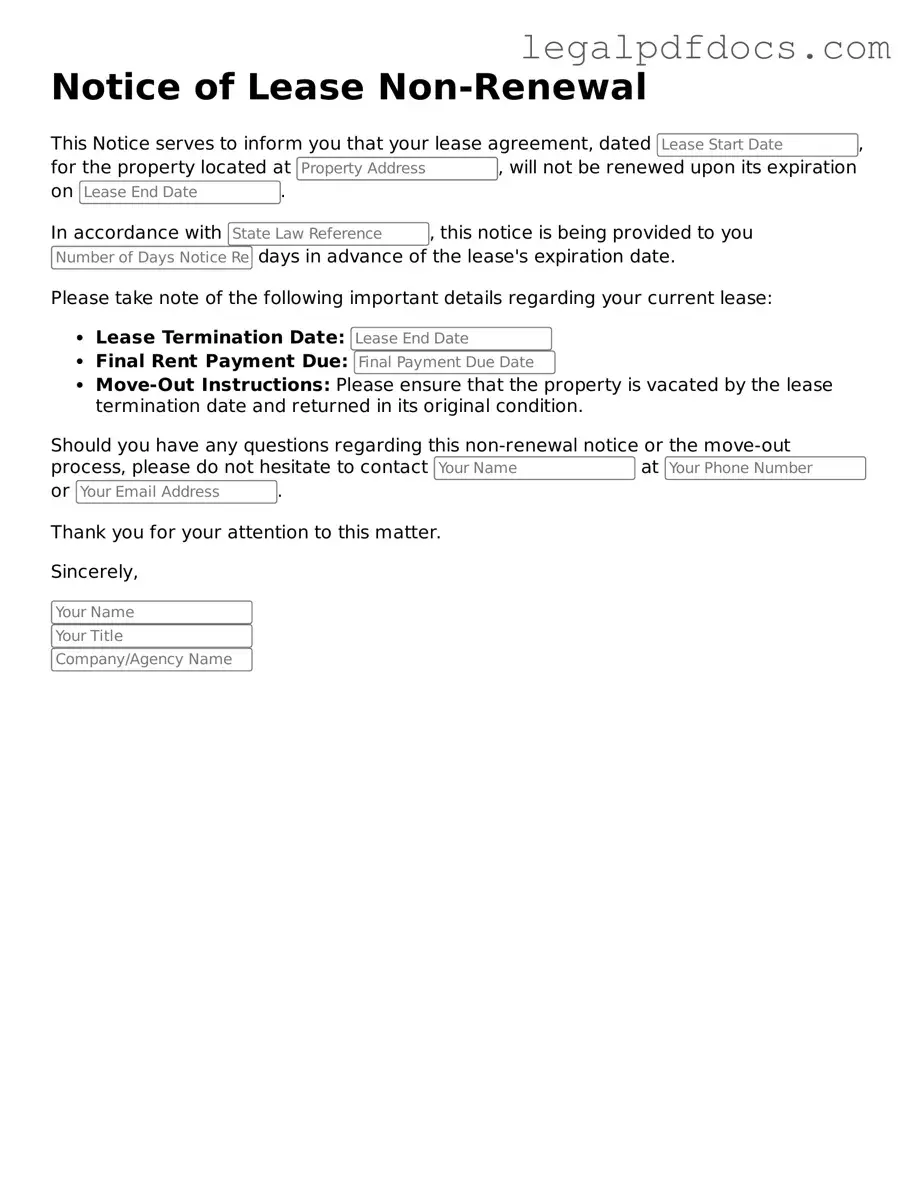The Notice of Lease Non-Renewal form plays a crucial role in the rental process, providing a clear and structured way for landlords to communicate their intent not to extend a lease agreement. This form typically includes essential information such as the names of the parties involved, the property address, and the specific dates relevant to the lease termination. By utilizing this form, landlords can ensure compliance with state and local laws regarding notice periods, which often require a certain amount of advance notice before the lease ends. Tenants benefit from receiving this notice as it allows them to prepare for their next steps, whether that involves finding a new place to live or negotiating terms for a potential new lease. The clarity and formality of the Notice of Lease Non-Renewal help to prevent misunderstandings and disputes, fostering a smoother transition for both parties. Understanding the significance of this form is essential for anyone involved in rental agreements, as it lays the groundwork for a respectful and organized conclusion to a lease term.
